Large-Eddy Simulation of a Hydrocyclone with an Air Core Using Two-Fluid and Volume-of-Fluid Models
Abstract
:1. Introduction
2. Equations for Two-Fluid and VOF Models
2.1. Two-Fluid Model
2.2. Volume-of-Fluid Model
3. Computational Grid and Boundary Conditions
Boundary Conditions and Numerical Method
4. Results: Two-Fluid Model
4.1. Inlet Pressure, Split Ratio, and Air Core
4.2. Mean Water Superficial Axial Velocity
4.3. Mean Water Superficial Tangential Velocity
4.4. Mean Water Superficial Radial Velocity
4.5. Resolved Normal Reynolds Stresses and Energy Spectra
4.6. Resolved Shear Reynolds Stresses
5. Comparison of Volume-of-Fluid and Two-Fluid Models
6. Effects of Subgrid-Scale Turbulence Model
7. Conclusions
Author Contributions
Funding
Conflicts of Interest
References
- Restarick, C.J. Adjustable Onstream Classification Using A Two Stage Cylinder-Cyclone. Miner. Eng. 1991, 4, 279–288. [Google Scholar] [CrossRef]
- Nowakowski, A.; Cullivan, J.; Williams, R.A.; Dyakowski, T. Application of CFD to modelling of the flow in hydrocyclones. Is this a realizable option or still a research challenge? Miner. Eng. 2004, 17, 661–669. [Google Scholar] [CrossRef]
- Rovinsky, L.A. Application of separation theory to hydrocyclone design. J. Food Eng. 1995, 26, 131–146. [Google Scholar] [CrossRef]
- Narasimha, M.; Mainza, A.; Holtham, P.; Brennan, M. Air-core modelling for hydrocyclones operating with solids. Int. J. Miner. Process. 2012, 102, 19–24. [Google Scholar] [CrossRef]
- Hararah, M.A.; Endres, E.; Dueck, J.; Minkov, L.; Neesse, T. Flow Conditions in The Air Core of The Hydrocyclone. Miner. Eng. 2010, 23, 295–300. [Google Scholar] [CrossRef]
- Devulapalli, B. Hydrodynamic Modeling of Solid-Liquid Flows in Large-Scale Hydrocyclones; The University of Utah: Salt Lake City, UT, USA, 1996. [Google Scholar]
- Slack, M.; Del Porte, S.; Engelman, M. Designing automated computational fluid dynamics modelling tools for hydrocyclone design. Miner. Eng. 2004, 17, 705–711. [Google Scholar] [CrossRef]
- Ghodrat, M. Computational Modelling and Analysis of the Flow and Performance in Hydrocyclones. Ph.D. Thesis, School of Materials Science and Engineering, The University of New South Wales, Kensington, Australia, 2014. [Google Scholar]
- Manninen, M.; Taivassalo, V.; Kallio, S. On the Mixture Model for Multiphase Flow. 1996. Available online: https://www.osti.gov/etdeweb/biblio/434874 (accessed on 24 August 2021).
- Cullivan, J.; Williams, R.A.; Cross, R. Understanding the hydrocyclone separator through computational fluid dynamics. Chem. Eng. Res. Des. 2003, 81, 455–466. [Google Scholar] [CrossRef]
- Narasimha, M.; Sripriya, R.; Banerjee, P. CFD modelling of hydrocyclone—Prediction of cut size. Int. J. Miner. Process. 2005, 75, 53–68. [Google Scholar] [CrossRef]
- Narasimha, M.; Brennan, M.; Holtham, P. Large eddy simulation of hydrocyclone—Prediction of air-core diameter and shape. Int. J. Miner. Process. 2006, 80, 1–14. [Google Scholar] [CrossRef]
- Hsieh, K.T. A Phenomenological Model of The Hydrocyclone. Ph.D. Thesis, University of Utah, Salt Lake City, UT, USA, 1988. [Google Scholar]
- Delgadillo, J.A.; Rajamani, R.K. A Comparative Study of Three Turbulence-Closure Models for The Hydrocyclone Problem. Int. J. Miner. Process. 2005, 77, 217–230. [Google Scholar] [CrossRef]
- Delgadillo, J.A.; Rajamani, R.K. Large-eddy simulation (LES) of large hydrocyclones. Part. Sci. Technol. 2007, 25, 227–245. [Google Scholar] [CrossRef]
- Brennan, M. CFD simulations of hydrocyclones with an air core, Comparison between large-eddy simulations and a second moment closure. Trans. IChemE Part A Chem. Eng. Res. Des. 2006, 84, 495–505. [Google Scholar] [CrossRef]
- Brennan, M.S.; Narasimha, M.; Holtham, P.N. Multiphase modelling of hydrocyclones–prediction of cut-size. Miner. Eng. 2007, 20, 395–406. [Google Scholar] [CrossRef]
- Wells, J.; Salem-Said, A.; Ragab, S.A. Effects of Turbulence Modeling on RANS Simulations of Tip Vortices. In Proceedings of the AIAA Paper 2010-1104, 48th AIAA Aerospace Sciences Meeting, Orlando, FL, USA, 4–7 January 2010. [Google Scholar]
- Piomelli, U.; Scotti, A.; Balaras, E. Large-Eddy Simulations of Turbulent Flows, from Desktop to Supercomputer. In Vector and Parallel Processing—VECPAR 2000; Palma, J.M.L.M., Dongarra, J., Hernández, V., Eds.; Springer: Berlin/Heidelberg, Germany, 2001. [Google Scholar]
- Vakamalla, T.R.; Mangadoddy, N. Numerical Simulation of Industrial Hydrocyclones Performance: Role of Turbulence Modeling. Sep. Purif. Technol. 2017, 176, 23–39. [Google Scholar] [CrossRef]
- Vakamalla, T.R.; Koruprolu, V.B.R.; Arugonda, R.; Mangadoddy, N. Development of novel hydrocyclone designs for improved fines classification using multiphase CFD model. Sep. Purif. Technol. 2017, 175, 481–497. [Google Scholar] [CrossRef]
- Ishii, M. Two-Fluid Model for Two-Phase Flow. Multiph. Sci. Technol. 1990, 5, 1–63. [Google Scholar] [CrossRef]
- Ishii, M.; Mishima, K. Two-fluid Model and Hydrodynamic Constitutive Relations. Nucl. Eng. Des. 1984, 82, 107–126. [Google Scholar] [CrossRef]
- Miller, J.D.; Das, A. Flow Phenomena and Its Impact on Air-Sparged Hydrocyclone Flotation of Quartz. Min. Metall. Explor. 1995, 12, 51–63. [Google Scholar] [CrossRef]
- Miller, J.D.; Das, A. Swirl Flow Characteristics and Froth Phase Features in Air-Sparged Hydrocyclone Flotation as Revealed by X-Ray CT Analysis. Int. J. Miner. Process. 1996, 47, 251–274. [Google Scholar] [CrossRef]
- Bukhari, M.; Fayed, H.E.; Ragab, S.A. Large-Eddy Simulation of Two-Phase Flow in Air-Sparged Hydrocyclone. In Proceedings of the 2021 AIAA SciTech Forum, Virtual Event, 11–15 January 2021. [Google Scholar] [CrossRef]
- Panneerselvam, R.; Savithri, S.; Surender, G.D. CFD Simulation of Hydrodynamics of Gas-liquid-solid Fluidised Bed Reactor. Chem. Eng. Sci. 2009, 64, 1119–1135. [Google Scholar] [CrossRef]
- Germano, M.; Piomelli, U.; Moin, P.; Cabot, W.H. A Dynamic Subgrid-Scale Eddy Viscosity Model. Phys. Fluids A 1991, 3, 1760–1765. [Google Scholar] [CrossRef] [Green Version]
- Clift, R.; Grace, R.J.; Weber, M.E. Bubbles, Drops and Particles; Dover Publications: Mineola, NY, USA, 2005. [Google Scholar]
- Brackbill, J.U.; Kothe, D.B.; Zemach, C. A Continuum Method for Modelling Surface Tension. J. Comput. Phys. 1992, 100, 335–354. [Google Scholar] [CrossRef]
- Drazin, P.G.; Reid, W.H. Hydrodynamic Stability, 2nd ed.; Cambridge University Press: Cambridge, UK, 2004. [Google Scholar]
- Sreedhar, M.; Ragab, S.A. Large Eddy Simulation of Longitudinal Stationary Vortices. Phys. Fluids 1994, 6, 2501–2514. [Google Scholar] [CrossRef] [Green Version]
- Cui, B.; Zhang, C.; Wei, D.; Lu, S.; Feng, Y. Effects of feed size distribution on separation performance of hydrocyclones with different vortex finder diameters. Powder Technol. 2017, 322, 114–123. [Google Scholar] [CrossRef]
- Welch, P. The use of fast Fourier transform for estimation of power spectra: A method based on time averaging over short, modified periodogram. IEEE Trans. Audio Electroacoust. 1967, 15, 70–73. [Google Scholar] [CrossRef] [Green Version]
- Ragab, S.A.; Sreedhar, M. Numerical Simulation of Vortices with Axial Velocity Deficit. Phys. Fluids 1995, 7, 549–558. [Google Scholar] [CrossRef] [Green Version]
- Durango-Cogollo, M.; Garcia-Bravo, J.; Newell, B.; Gonzalez-Mancera, A. CFD Modeling of Hydrocyclones—A Study of Efficiency of Hydrodynamic Reservoirs. Fluids 2020, 5, 118. [Google Scholar] [CrossRef]
- Feiz, A.A.; Ould-Rouis, M.; Lauriat, G. Large eddy simulation of turbulent flow in a rotating pipe. Int. J. Heat Fluid Flow 2003, 24, 412–420. [Google Scholar] [CrossRef]
- Orlandi, P.; Fatica, M. Direct simulations of turbulent flow in a pipe rotating about its axis. J. Fluid Mech. 1997, 343, 43–72. [Google Scholar] [CrossRef]

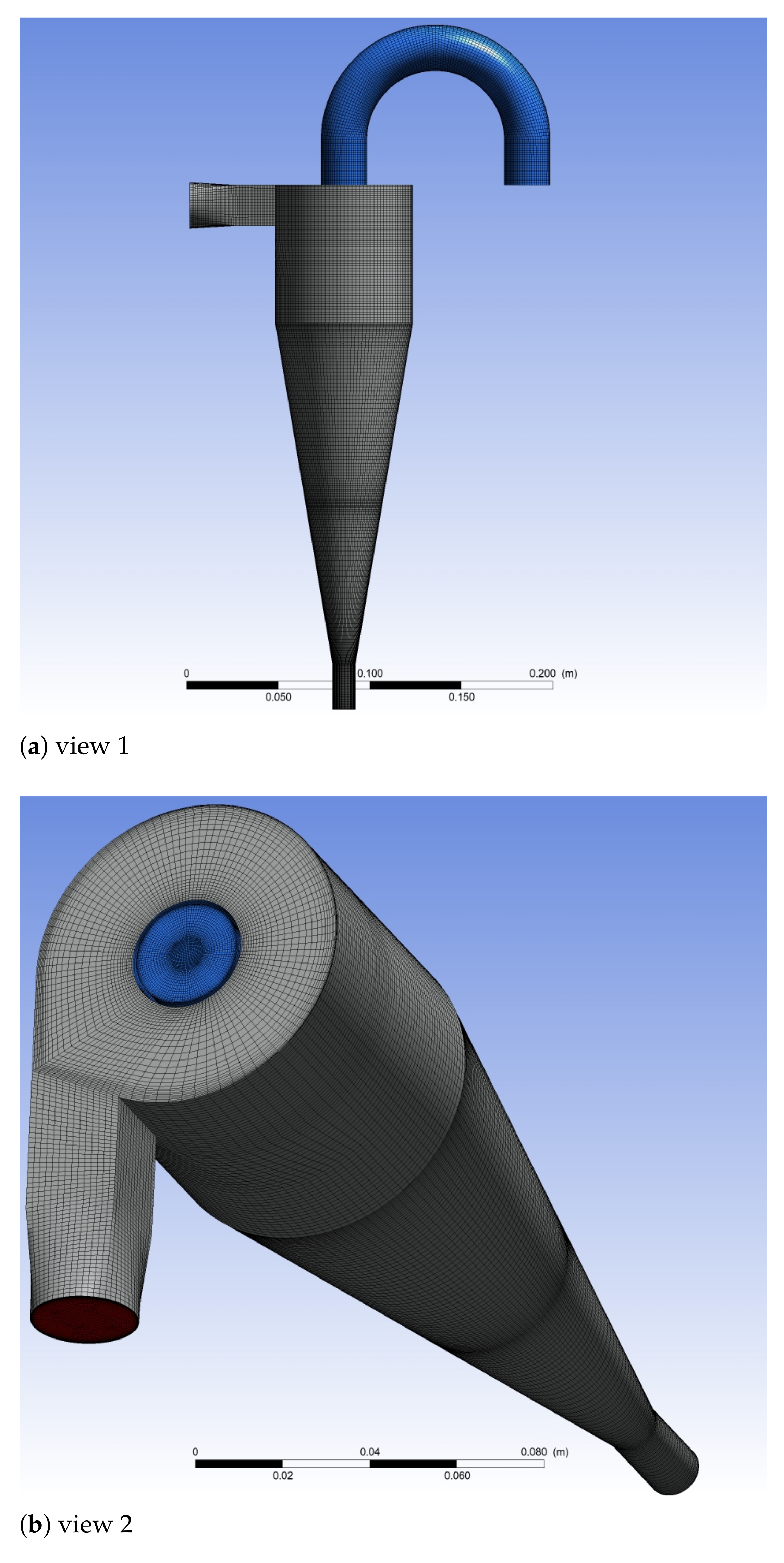

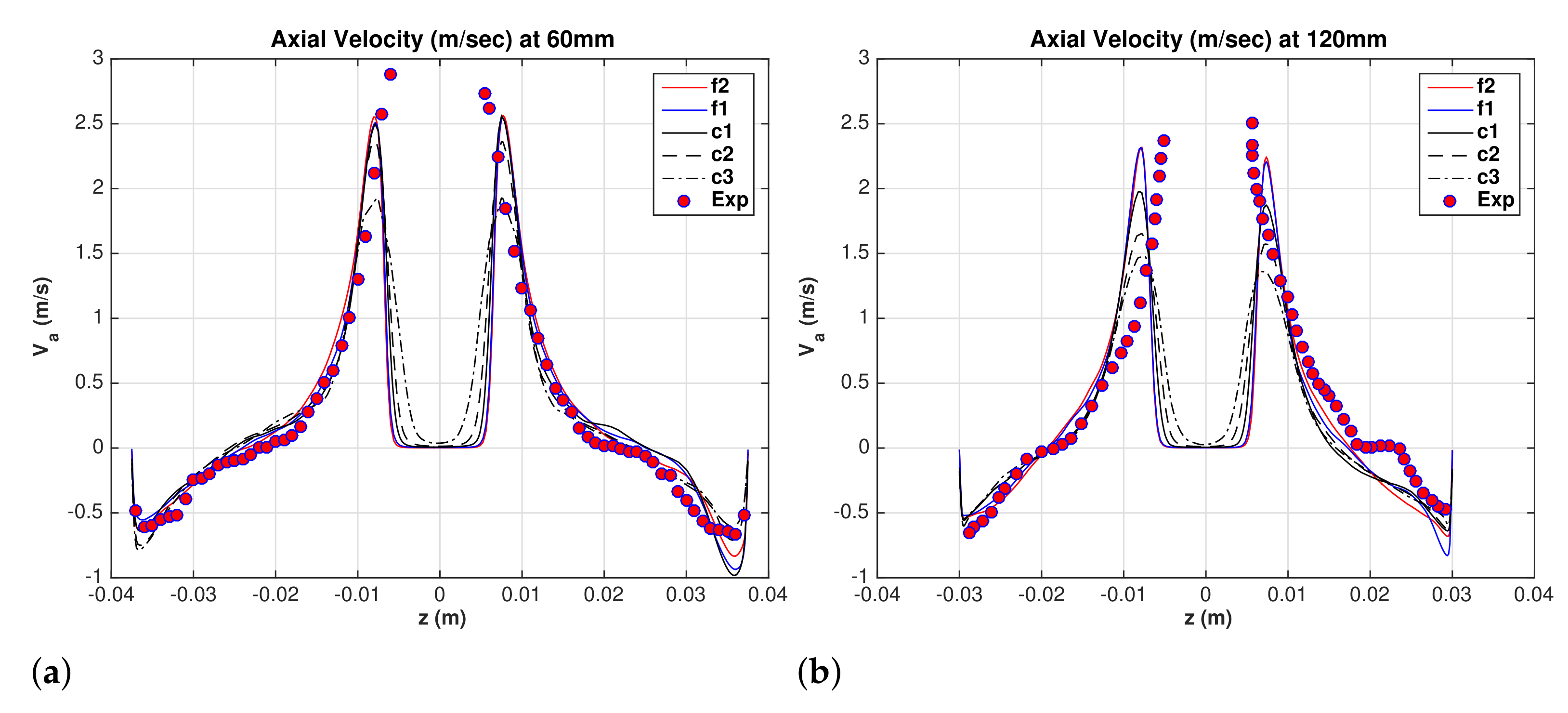
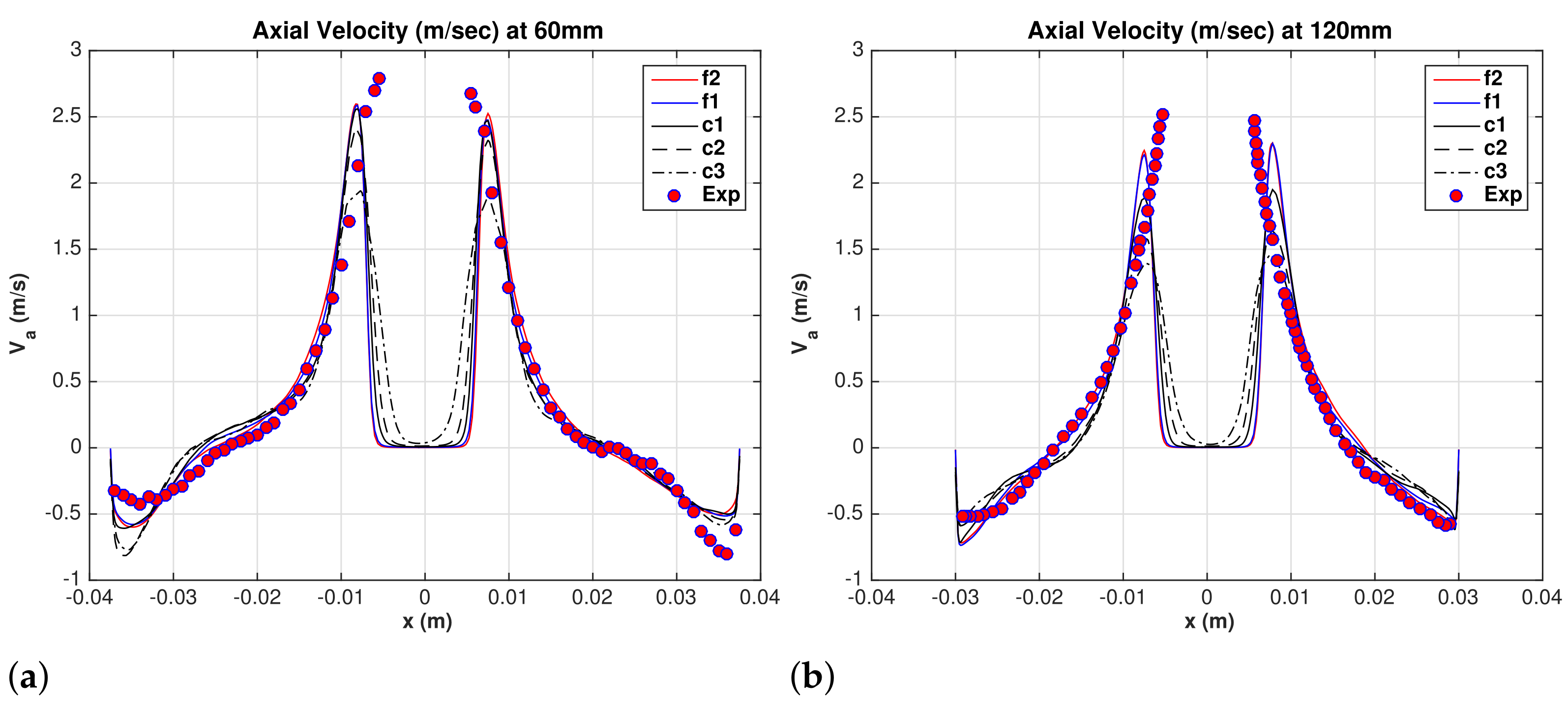
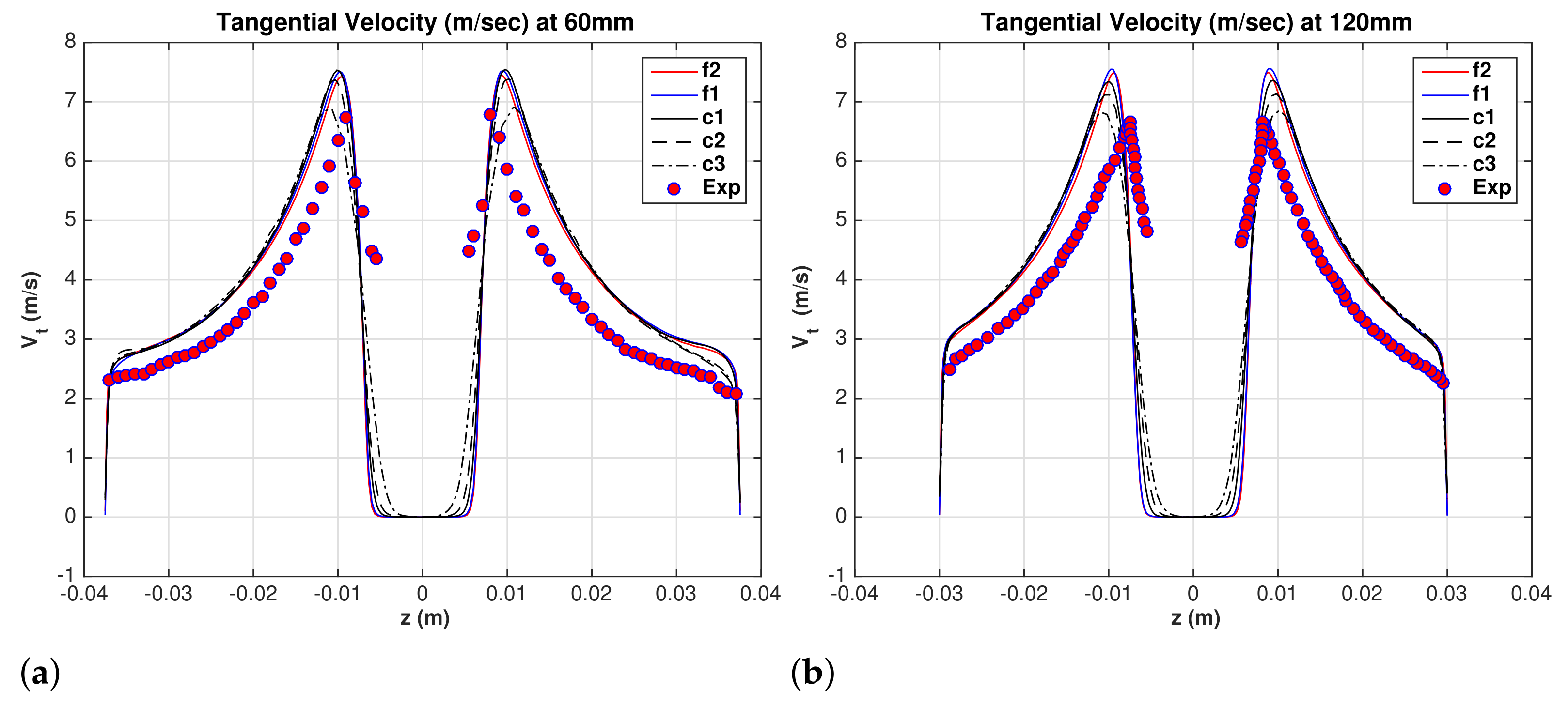
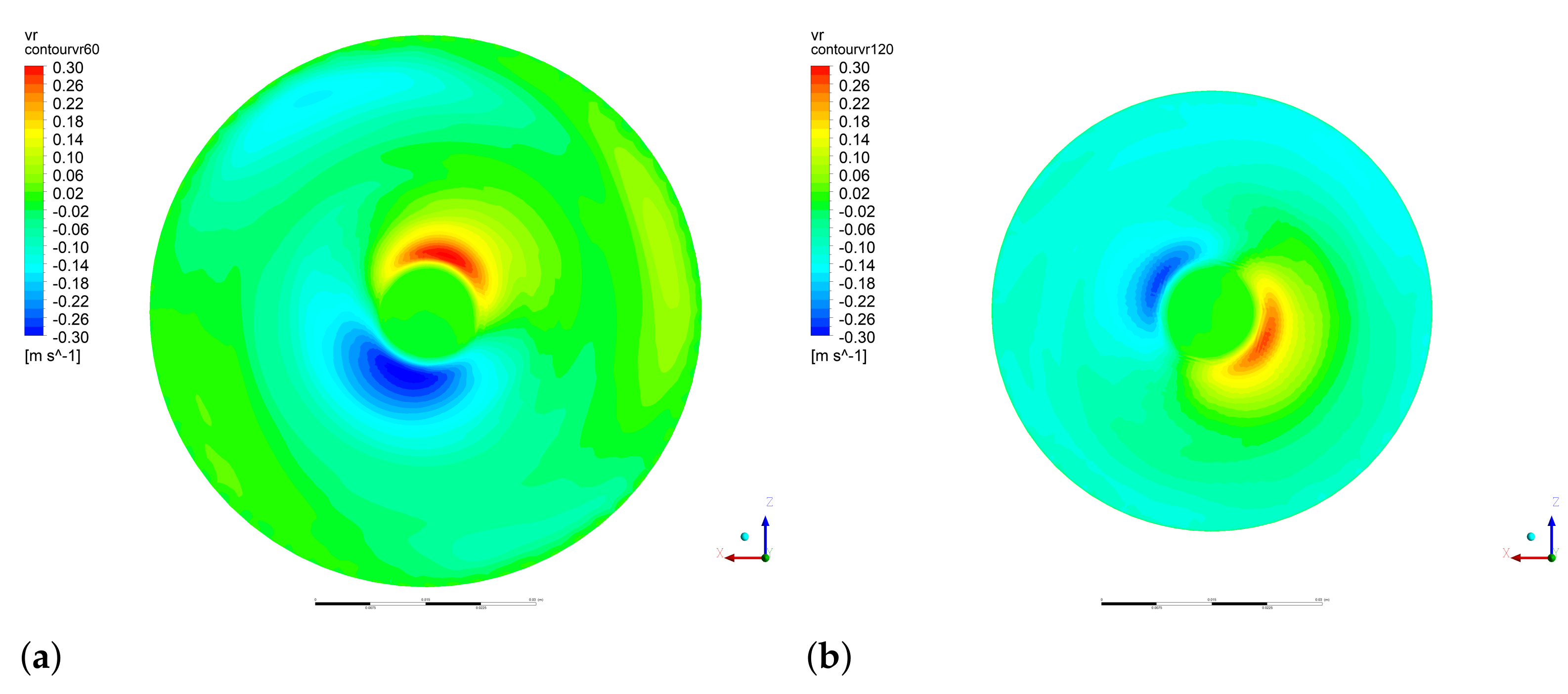

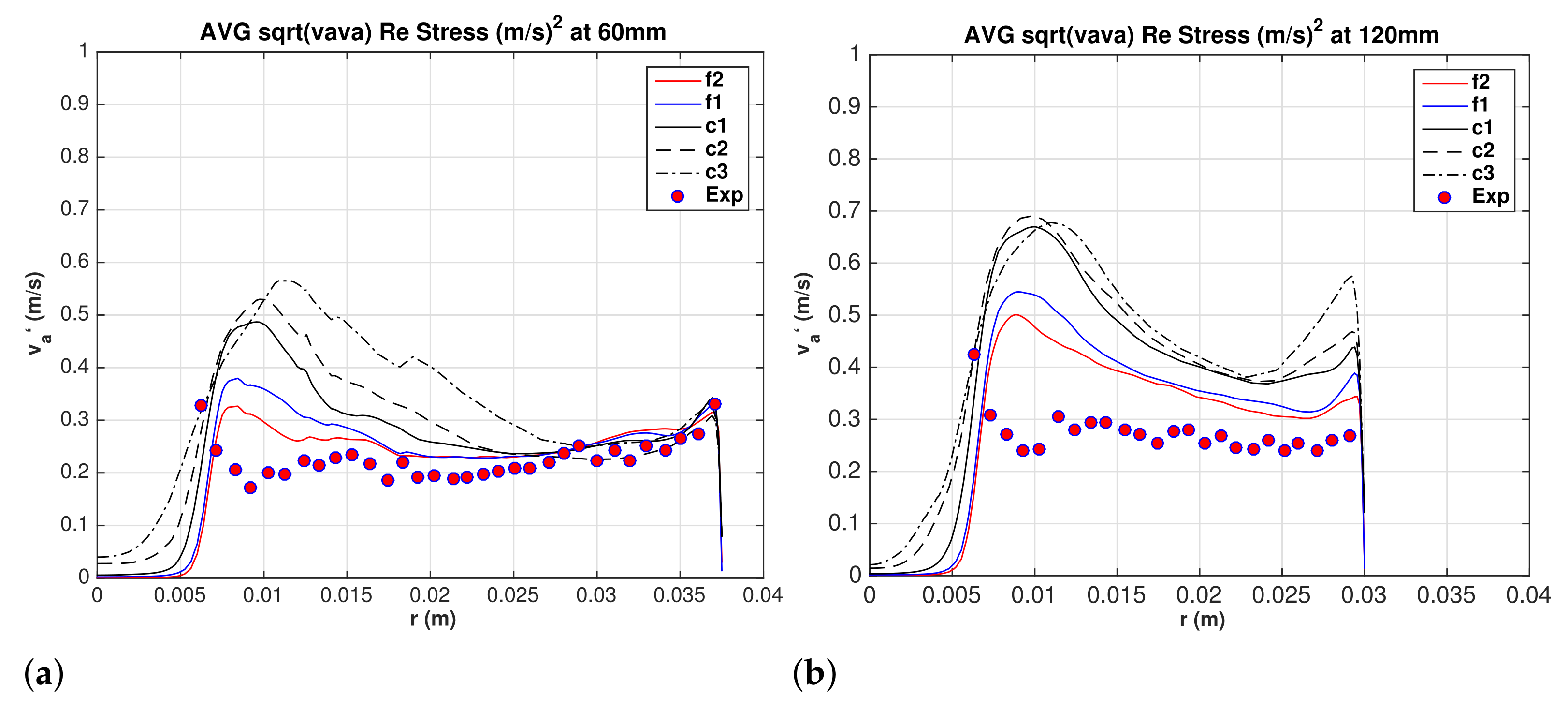




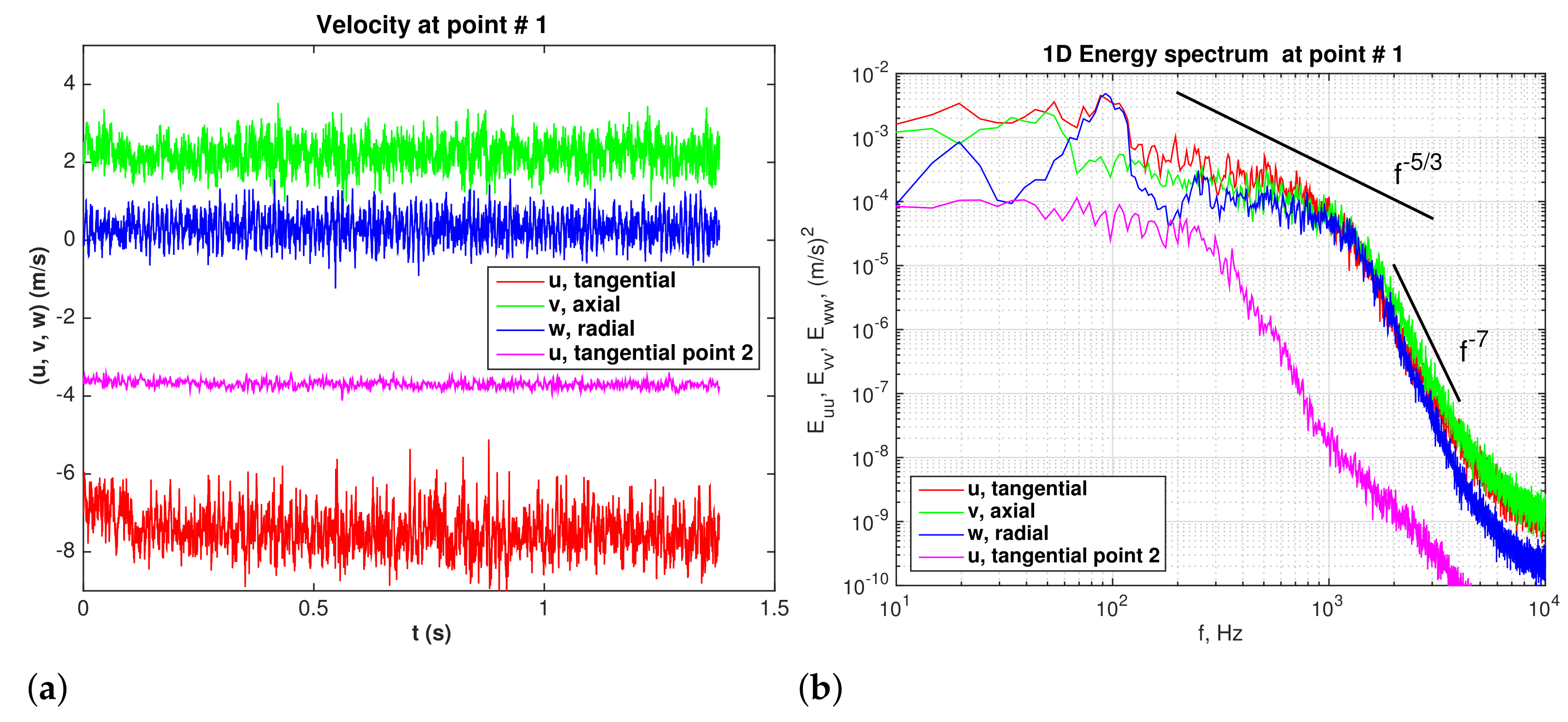
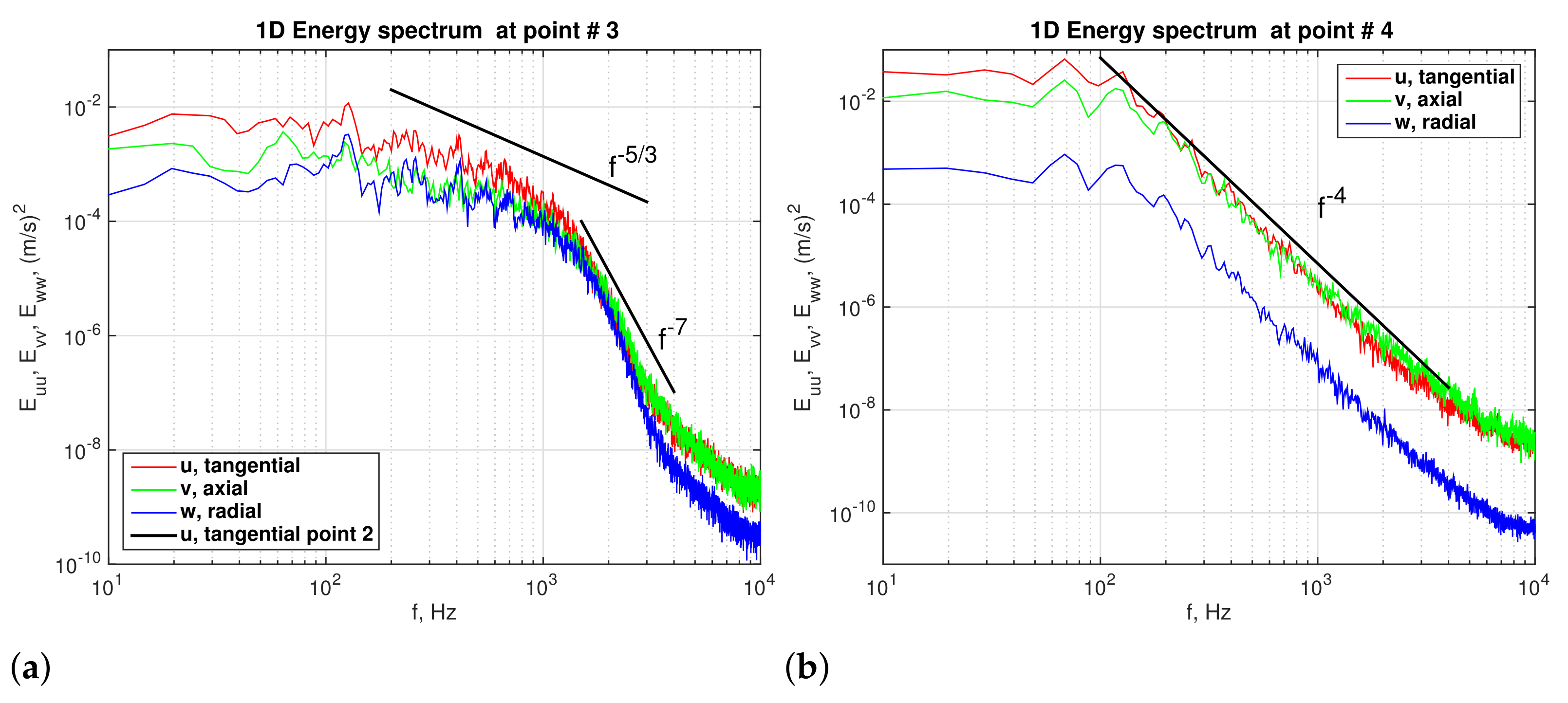
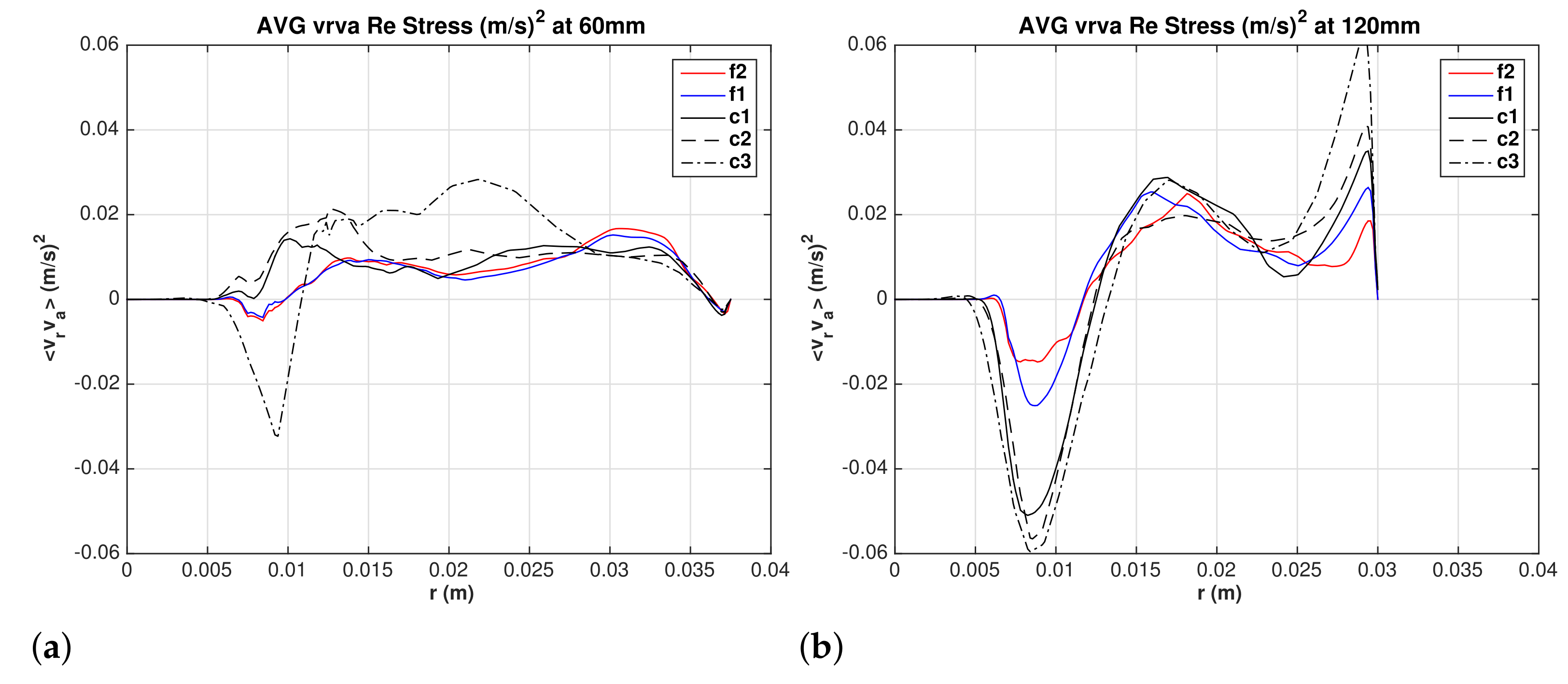
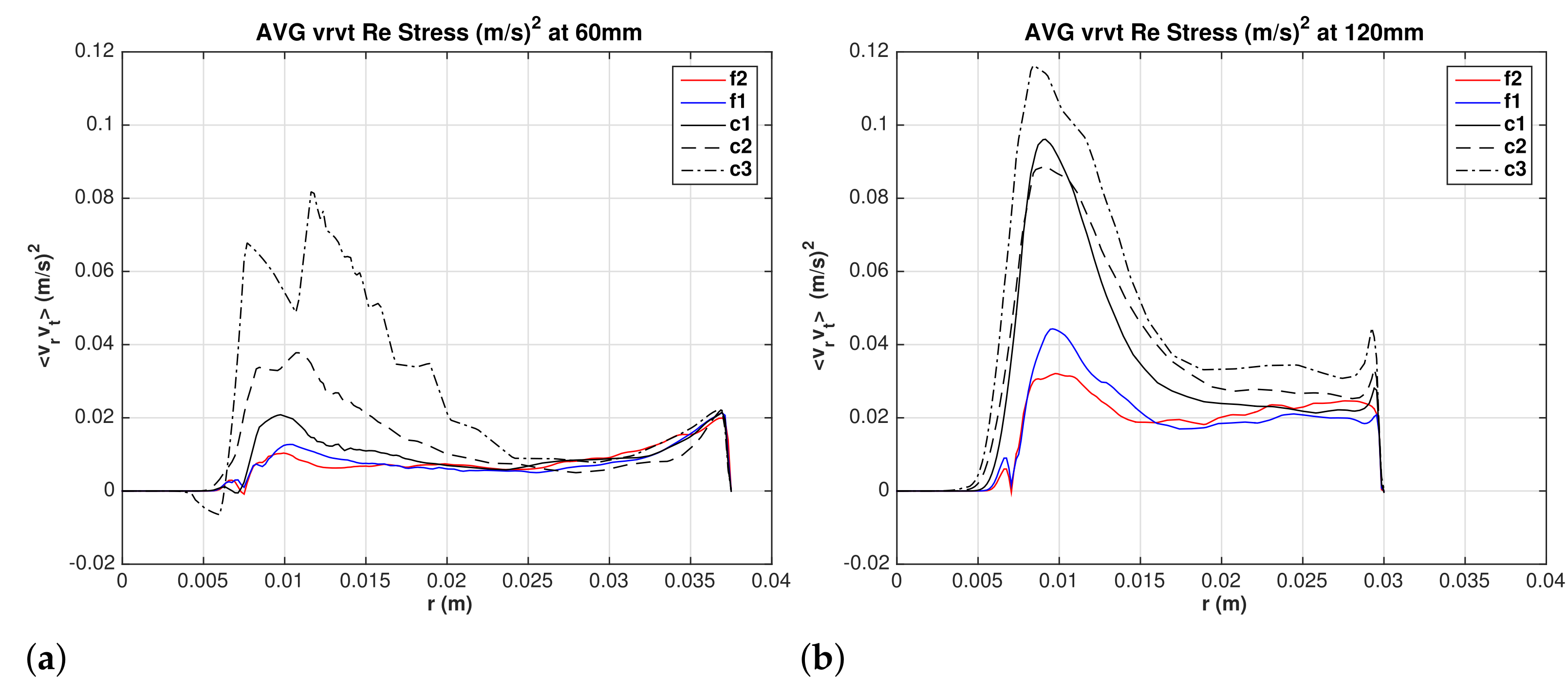
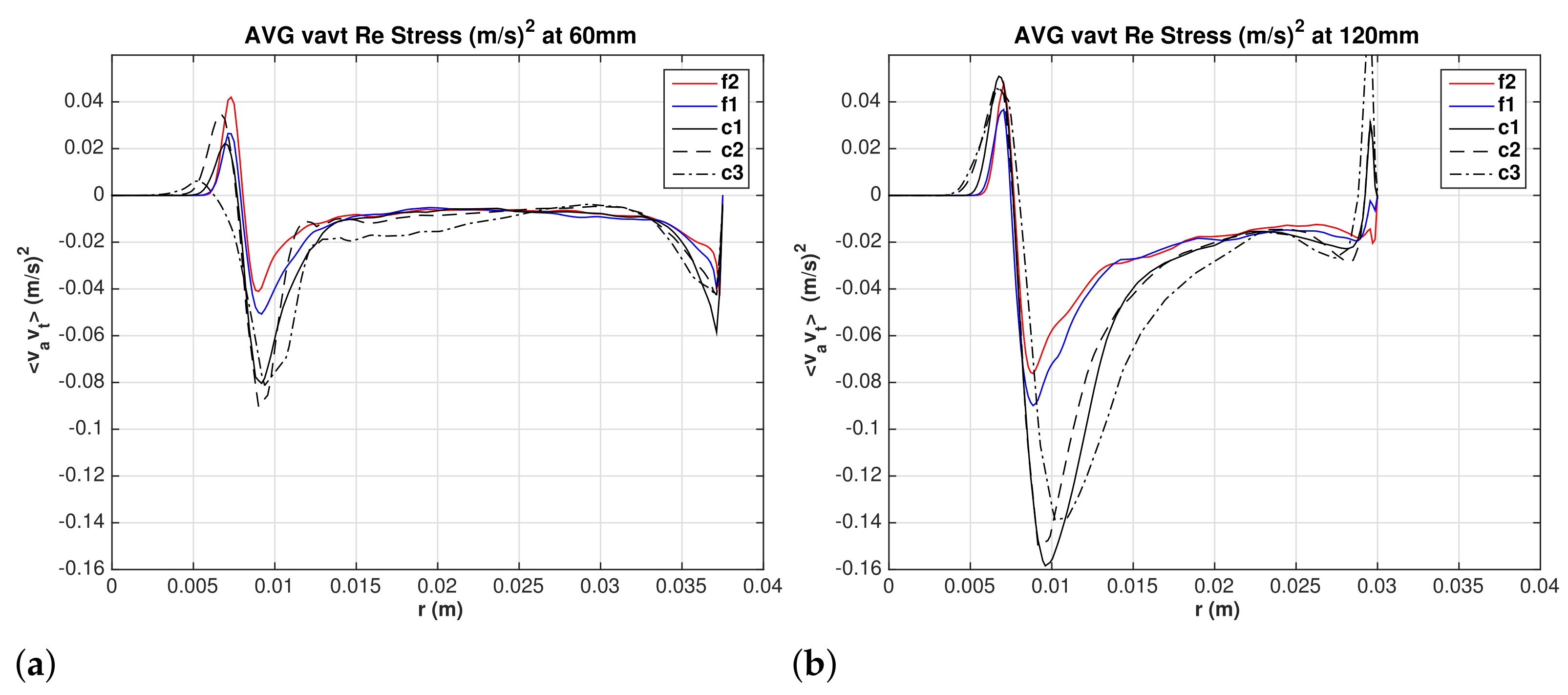
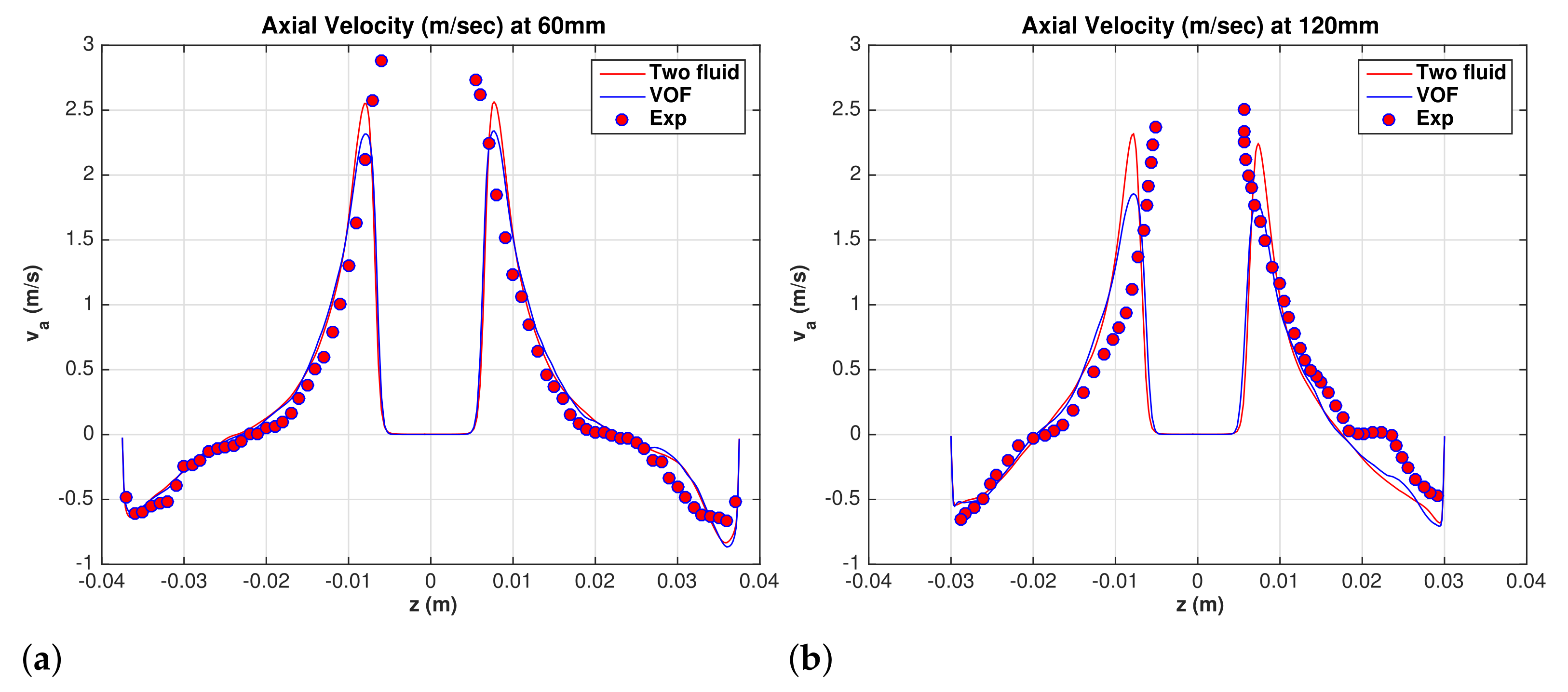
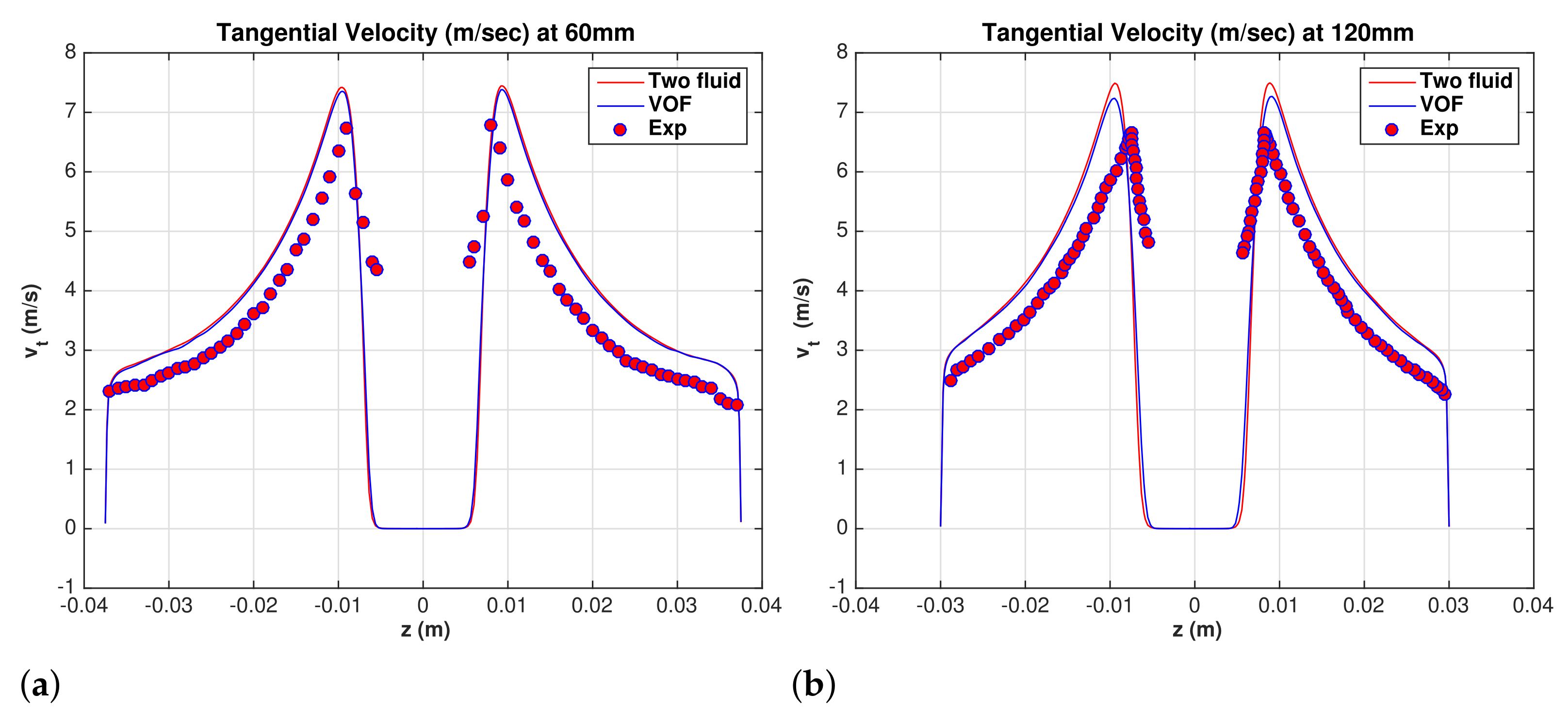
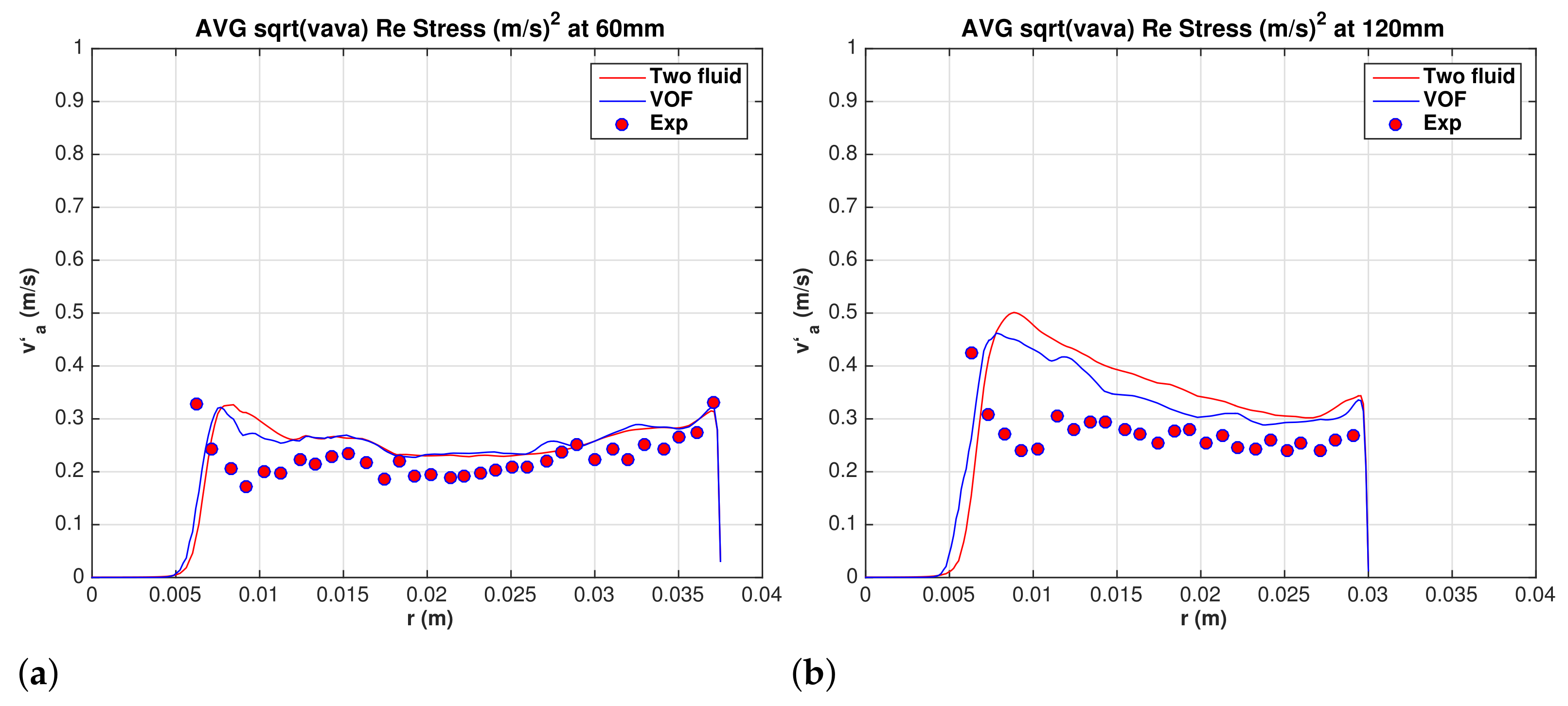
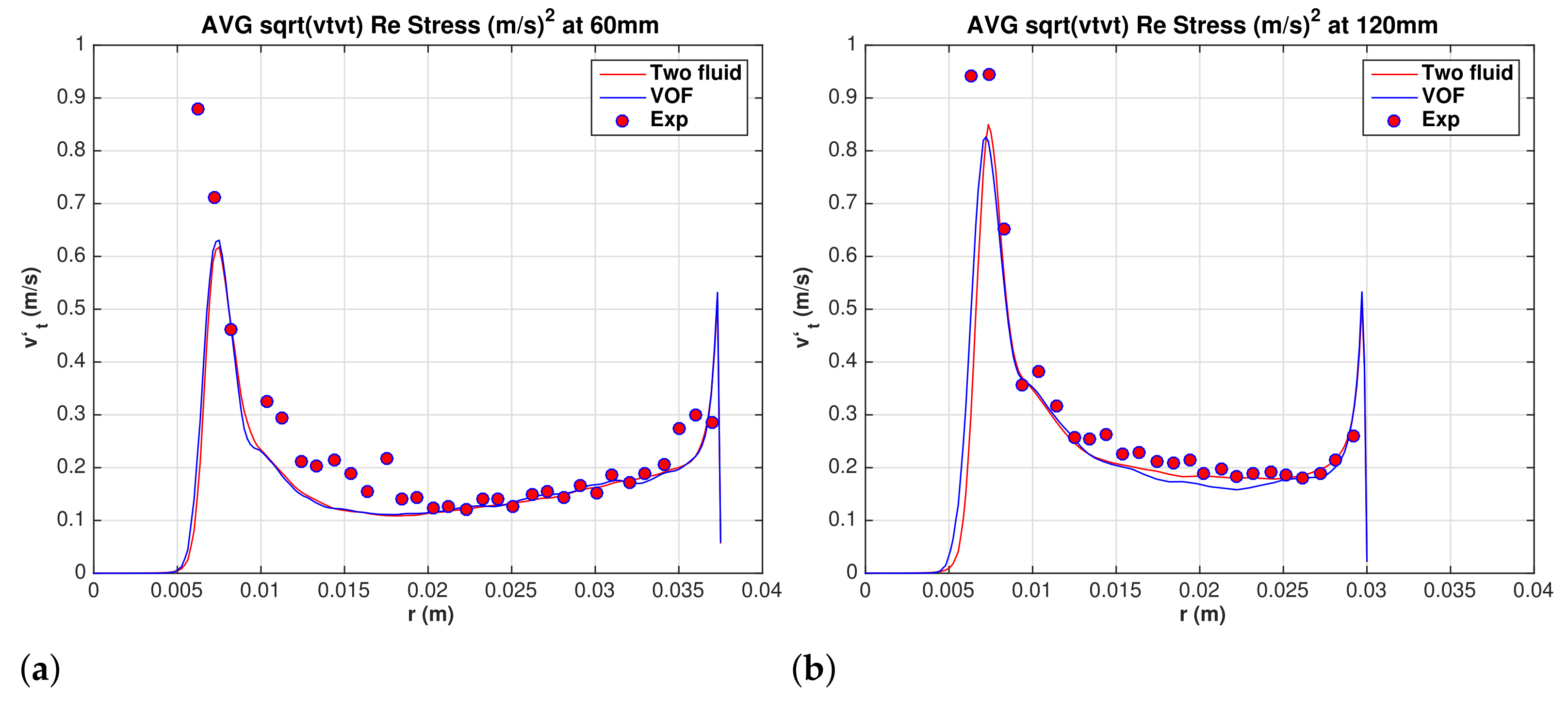
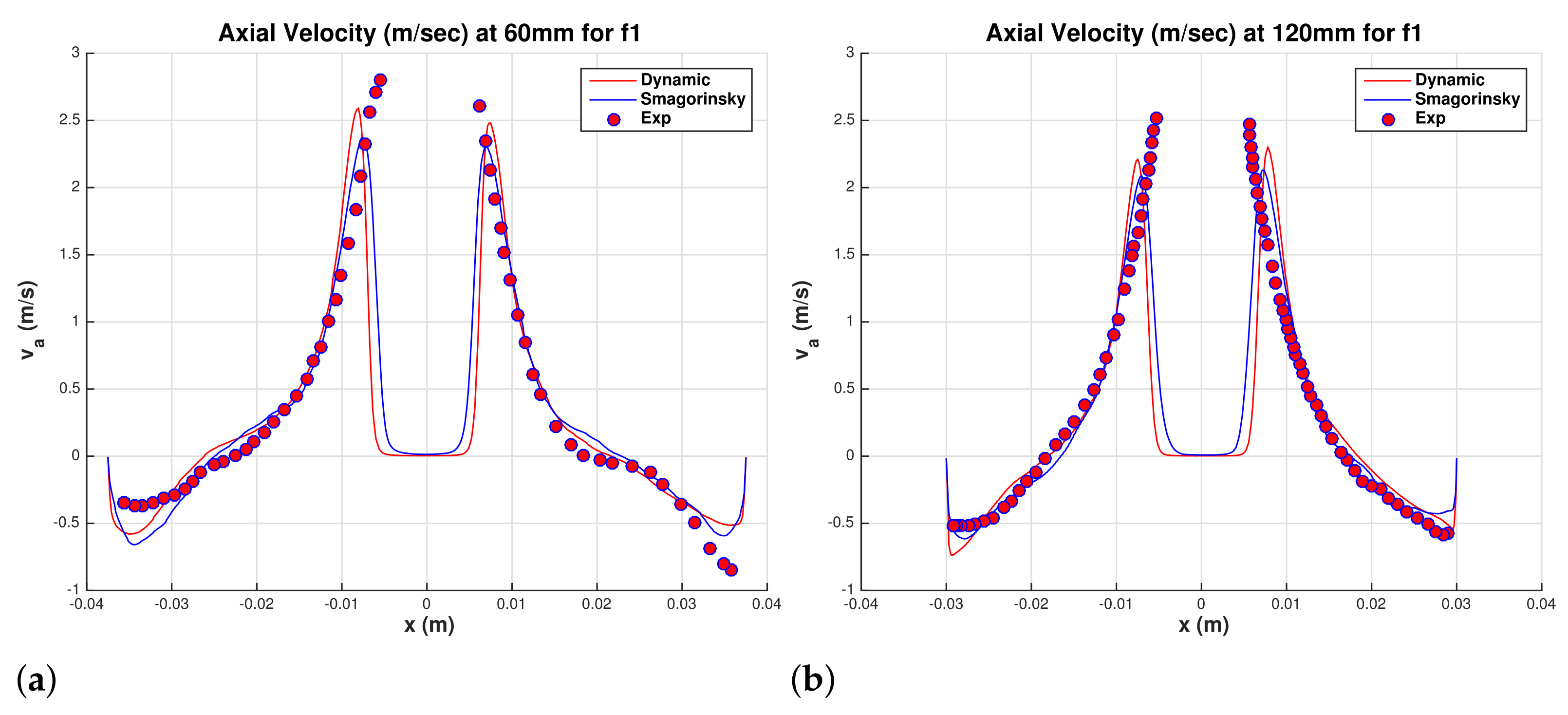
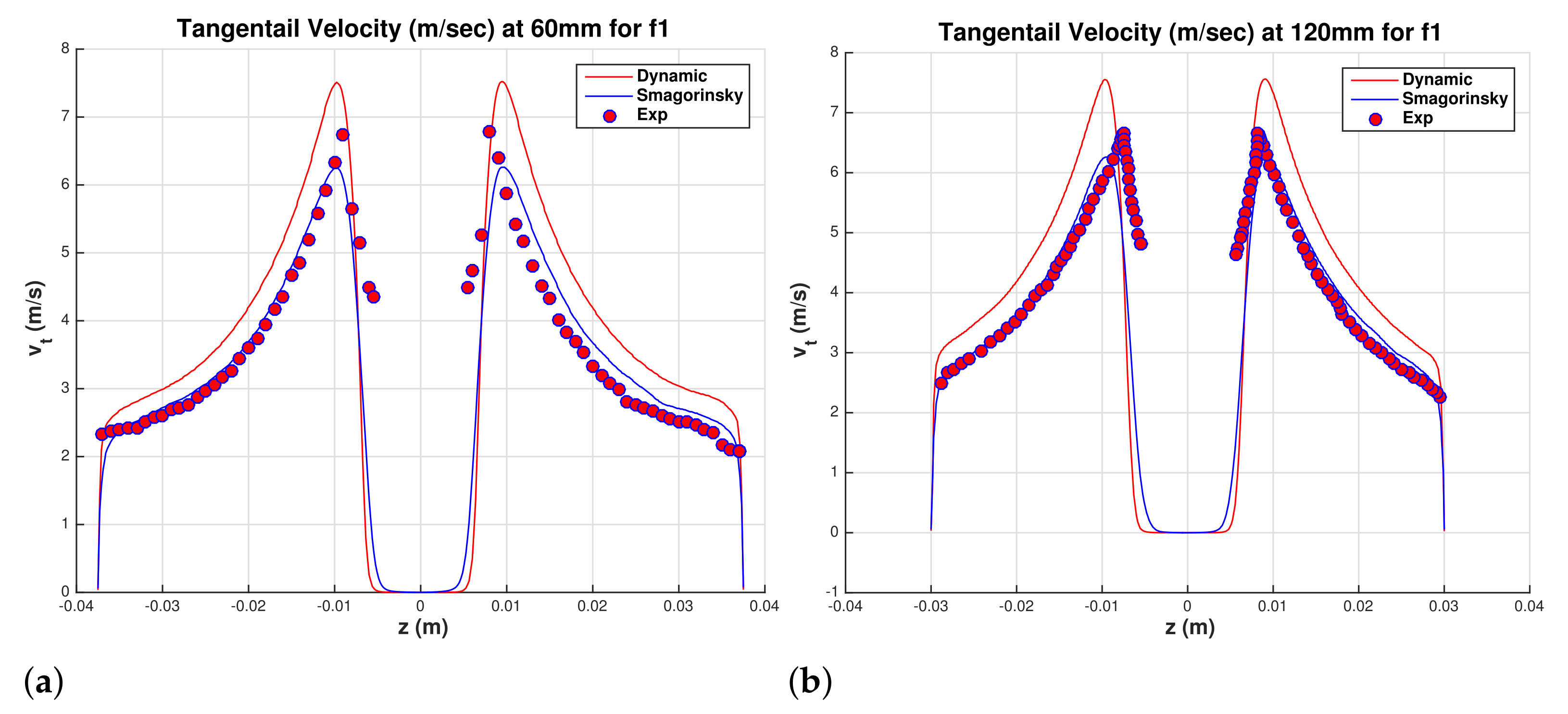
| Grid | Elements () | , kPa | %Error | %Overflow | %Error | |
|---|---|---|---|---|---|---|
| Coarse c3 | 0.72 | 11 | 46.6 | 0.2 | 95.9 | 1.0 |
| Coarse c2 | 1.47 | 18 | 47.9 | 2.6 | 96.4 | 1.5 |
| Coarse c1 | 2.40 | 17 | 48.8 | 4.5 | 96.6 | 1.7 |
| Fine f1 | 3.81 | 2.2 | 48.4 | 3.6 | 97.9 | 3.0 |
| Fine f2 | 7.38 | 2.2 | 47.1 | 0.9 | 97.8 | 3.0 |
| VOF f2 | 7.38 | 2.2 | 45.9 | 1.7 | 97.6 | 2.7 |
| Exp. data | 46.7 | 95.0 |
Publisher’s Note: MDPI stays neutral with regard to jurisdictional claims in published maps and institutional affiliations. |
© 2021 by the authors. Licensee MDPI, Basel, Switzerland. This article is an open access article distributed under the terms and conditions of the Creative Commons Attribution (CC BY) license (https://creativecommons.org/licenses/by/4.0/).
Share and Cite
Fayed, H.; Bukhari, M.; Ragab, S. Large-Eddy Simulation of a Hydrocyclone with an Air Core Using Two-Fluid and Volume-of-Fluid Models. Fluids 2021, 6, 364. https://doi.org/10.3390/fluids6100364
Fayed H, Bukhari M, Ragab S. Large-Eddy Simulation of a Hydrocyclone with an Air Core Using Two-Fluid and Volume-of-Fluid Models. Fluids. 2021; 6(10):364. https://doi.org/10.3390/fluids6100364
Chicago/Turabian StyleFayed, Hassan, Mustafa Bukhari, and Saad Ragab. 2021. "Large-Eddy Simulation of a Hydrocyclone with an Air Core Using Two-Fluid and Volume-of-Fluid Models" Fluids 6, no. 10: 364. https://doi.org/10.3390/fluids6100364
APA StyleFayed, H., Bukhari, M., & Ragab, S. (2021). Large-Eddy Simulation of a Hydrocyclone with an Air Core Using Two-Fluid and Volume-of-Fluid Models. Fluids, 6(10), 364. https://doi.org/10.3390/fluids6100364






